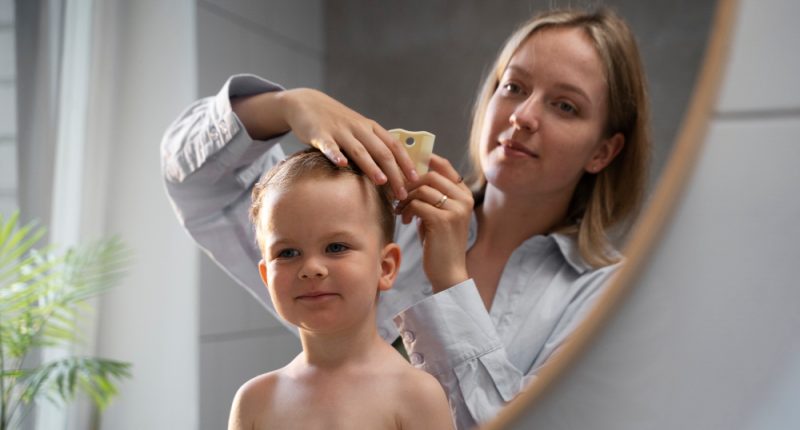In the ongoing battle against skin ailments, particularly scabies, a new research sheds light on a potentially game-changing solution that is both safe and effective for the most vulnerable—infants and young children. Traditionally, scabies has been a challenging condition to manage, especially in young children, due to the limited number of safe therapeutic options available. However, according to a recent study, sulfur, when compounded in a 5% to 10% concentration within a petrolatum base, emerges as a beacon of hope for countless young sufferers and their families.
The Study
The detailed research, focusing on the use of sulfur for topical use, presents compelling evidence indicating that sulfur in concentrations of 5% to 10% mixed in a petrolatum base can be safely applied to the skin of children, including those as young as two months old. This revelation is particularly significant given the hypersensitivity of infant skin and the critical need for treatments that are both gentle and efficacious.
What is Scabies and Why the Concern?
Scabies is a highly contagious skin condition caused by a mite known as Sarcoptes scabiei. The mites burrow into the skin, causing intense itching and a pimple-like skin rash. In young children and infants, it can be particularly distressive, leading to severe itching and, consequently, secondary skin infections due to scratching. Managing scabies in newborns and infants has always been problematic, primarily because many medications suitable for adults and older children are not recommended for younger children due to their toxicity or the harsh nature of the chemical ingredients.
The Sulfur Solution
The study pinpoints sulfur – an element known for its natural antimicrobial properties – as a potent scabicidal agent. When formulated as a 5% to 10% composition in a simple petrolatum base, it acts effectively to eliminate the scabies mite without harming the delicate skin of infants. This is a critical advantage over more commonly used treatments that may pose risks of side effects.
Safety and Efficacy
According to the research, sulfur at this concentration is not only efficacious in eradicating mites but also remarkably safe. This safety profile makes sulfur a preferred option for pediatric dermatologists looking for solutions to manage scabies in populations that are usually more vulnerable to side effects from conventional treatments.
Limitations and Considerations
While sulfur in petrolatum proves to be an excellent choice for areas such as the arms, legs, and torso, the study does advise against its use on the breast area for nursing mothers. The petrolatum base, while excellent for delivering sulfur in a safe formulation, is not ideal for application on the breast due to its occlusive nature which might pose a risk to the nursing infant.
Expert Opinions
Dermatologists and pediatric specialists have welcomed these findings, noting that an effective, accessible, and safe treatment like sulfur-petrolatum could significantly ease the burden on healthcare systems by lowering the dependency on more aggressive forms of treatment and decreasing the incidence of secondary infections associated with scabies.
Dr. Jane McCarthy, a pediatric dermatologist involved in the study, emphasized the importance of this development: “Finding a treatment that is both safe for our youngest patients and effective against a pest as stubborn as the scabies mite has always been a challenge. This sulfur formulation could truly change the landscape of pediatric dermatological treatments.”
Impact on Pediatric Care
The confirmation of sulfur’s safety and efficacy for infant use is expected to have profound implications in pediatrics, particularly in regions where scabies is endemic and access to sophisticated healthcare options is limited. This treatment offers a cost-effective, easy-to-apply solution that could potentially be utilized in broader public health initiatives aimed at combating scabies outbreaks in communities.
Future Research and Applications
The study opens the door for further research into sulfur’s potential applications beyond scabies, looking into other skin conditions that could benefit from its antimicrobial and therapeutic properties. Furthermore, improvement in the formulations to overcome current limitations, such as developing alternatives to petrolatum bases for use on the breast, could widen the usability of sulfur in dermatological practice.
Conclusion
This breakthrough in pediatric skincare represents a significant stride forward in the battle against scabies, offering a beacon of hope for the effective management of this irritating—and often painful—condition in infants and young children. As healthcare communities continue to seek safer, more effective treatments, sulfur, a seemingly simple yet powerful element, stands out for its potential to make a substantial difference in the quality of life for affected individuals and their families.
As research progresses and sulfur-based treatments become more integrated into clinical practice, the days of fearing scabies infestations in our youngest could be numbered, thanks to this age-old remedy that has proven itself a surprising ally in modern medicine.




